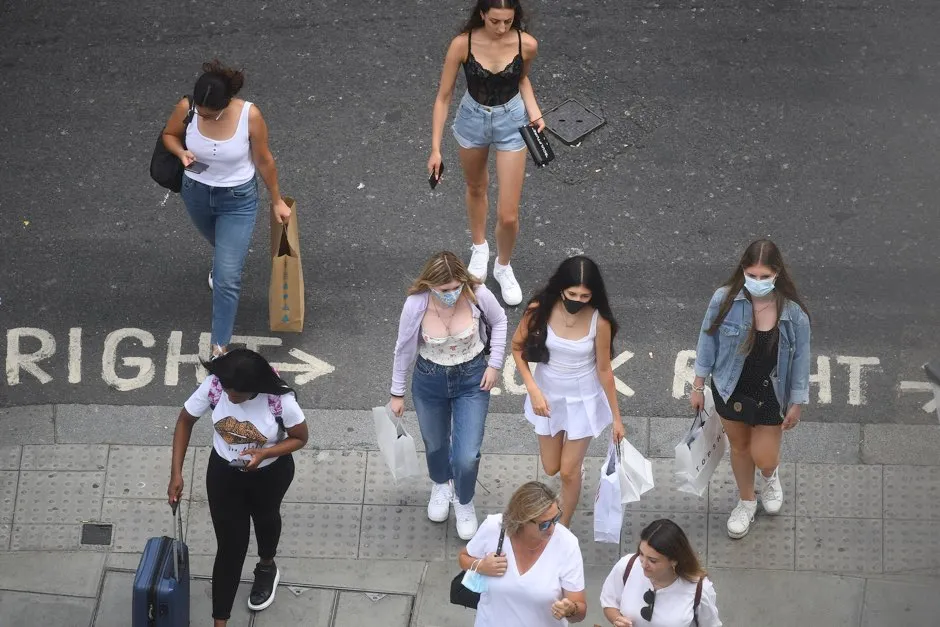One in five people in London and the South East who have had coronavirus did not show any symptoms, a new study suggests.
It also found that more than a quarter (27 per cent) of people who did fall ill did not display the three main signs of COVID-19 – persistent cough, fever and loss of smell (anosmia).
Researchers said this is the first UK-based pre-print study linking detailed ongoing symptom collection data with antibody testing and highlights the likely extent of COVID-19 infections across the region.
Read more about coronavirus symptoms:
- Over 40 per cent of COVID-19 cases asymptomatic in Italian town study
- Simple salt water solution 'could help reduce coronavirus symptoms'
- COVID-19 asymptomatic in over 80 per cent of cases, cruise ship study finds
Study lead and consultant geriatrician from King’s College London, Dr Claire Steves, said: “Our findings highlight the fact that a significant proportion of people who get infected with coronavirus don’t have any obvious symptoms but may still pass the disease on to others.
“It’s essential that we all take steps to protect the health of everyone by sticking to social distancing guidelines, wearing face coverings in public, and following good hand hygiene practices.
“Testing is much more available now. So, if you have symptoms you can’t explain – get a swab or saliva test, as that way you will know to protect yourself and the people around you.”

In order to get a true picture of the disease, it is crucial to understand the extent to which people have been previously exposed to COVID-19, using testing for antibodies in the blood.
The King’s College London researchers carried out antibody testing on blood samples from 432 adults aged 18-89 in the ongoing TwinsUK study living in Greater London and south-east England.
Of those, 382 had also been regularly logging their health over three months using the COVID Symptom Study app.
Participants were tested for coronavirus to check whether they were currently infected, and asked if they had ever previously been tested.
Researchers found that one in eight ( 12 per cent) were positive for viral antibodies.
Focusing on 48 people with a positive antibody result who had also been regularly logging their health, the researchers found that nearly one in five (19 per cent) never experienced any symptoms throughout the duration of the study.
More than one in four (27 per cent) with antibodies and experienced symptoms did not have the three core NHS symptoms.
However, the non-peer-reviewed study found that loss of smell alone was still highly specific for having the virus, compared with the combination of all three symptoms.

The scientists said this highlights its importance as a key early warning sign of the disease.
Around half of the app users who reported symptoms which were highly predictive of the disease did not have antibodies against the virus, confirming other studies showing that current antibody testing misses a substantial fraction of cases, researchers said.
Read the latest coronavirus news:
- China, Iran and Italy linked to two thirds of early coronavirus cases
- Wearing a face mask does not give 'false sense of security', say experts
- Dogs trained to sniff out patients with COVID-19
Professor Tim Spector, from King’s College London, said: “These results suggest that both swab and antibody testing significantly under-estimate the extent of coronavirus infections in the population.
“We need to combine testing approaches together with getting as many people as possible logging their daily health through the COVID Symptom Study app to really understand the spread of the virus and control it over the months ahead.”
Q&A: What is viral load and why is it important to coronavirus?
Viral load is simply the amount of virus in the body. This varies in different parts of the body, and can change over time. Recent studies have shown, for example, that the viral load in the lungs of COVID-19 patients is greater than that in the nose.
A patient’s viral load increases as the virus replicates and disease symptoms get worse, and then decreases as the patient recovers. So monitoring the viral load can give us a useful indication of how a patient’s infection is progressing.
The amount of virus that you’re exposed to at the beginning of an infection is something different, and this is called the ‘infectious dose’. Studies on other viruses such as the flu and SARS have shown that the higher the infectious dose (the more virus you breathe in), the greater your chances of having more severe symptoms.
With one small exposure, your immune system may be able to fight off the virus before you get sick, but with repeated small exposures (such as touching your face throughout the day) or one large exposure (an infected person coughing in your face), the virus may grow faster than your body can control.
We don’t yet know if this link between infectious dose and disease severity holds for COVID-19, but it may do, and that’s why it’s so important to maintain physical distancing and keep the initial exposure as low as possible.
Read more:
